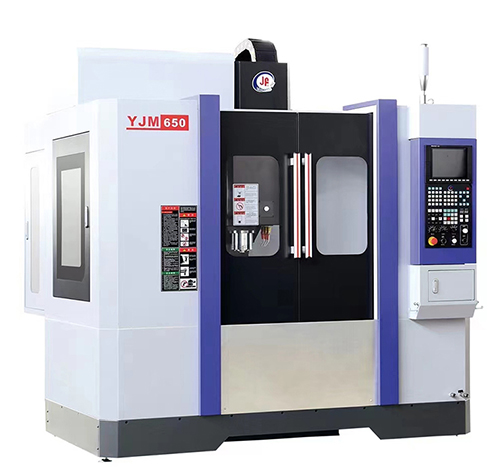
The CNC machining center generally consists of the following major components:
Basic Components: These include the bed, column, and worktable, which primarily bear the static load of the machining center and the cutting forces generated during machining. Therefore, they must have sufficient rigidity. These large parts can be made from cast iron or welded steel structures.
Spindle Components: These consist of the spindle box, spindle motor, spindle, and spindle bearings. The actions of starting, stopping, and speed-changing of the spindle are all controlled by the CNC system. The spindle, with the tool mounted on it, participates in the cutting motion and is the power output component for cutting, which determines the machining accuracy and stability.
CNC System: The CNC part consists of the CNC lathe, programmable logic controller (PLC), servo drive device, and operation panel.
Auxiliary Devices: These include lubrication, cooling, chip removal, protection, hydraulic, pneumatic, and inspection systems. Although these devices do not directly participate in the cutting motion, they play a crucial role in ensuring machining efficiency, accuracy, and reliability. They are indispensable parts of the system.

The operating environment of the machining center significantly impacts the equipment's performance and machining efficiency. Therefore, before installing the machining equipment, it is essential to have a clear understanding of the factory environment to select a suitable location.
General Installation Conditions: The machining center is typically installed in a machine shop, where the environment is subject to large temperature fluctuations, poor operating conditions, and many electrical devices, leading to large fluctuations in the power supply. Therefore, the installation location should have strict control over the power supply voltage, which must remain within the allowable range and be relatively stable, as fluctuations will affect the normal operation of the CNC system.
Installation Location Requirements: The installation location should be away from vibration sources, avoid direct sunlight and heat radiation, maintain suitable temperature, be dry and well-ventilated, and facilitate heat dissipation and cooling. The ground should be flat and firm to prevent small animals from entering. The equipment should be easy to move in and out, with no corrosive or explosive gases nearby. The site should also have proper grounding, adequate lighting, and meet fire safety requirements.
Environmental Conditions: The ambient temperature should be below 30°C (86°F), and the relative humidity should be less than 80%. Generally, the CNC control cabinet is equipped with a fan or air conditioning system to maintain a stable temperature for electronic components, especially the central processing unit (CPU). Excessive temperature and humidity can reduce the lifespan of the control system components and increase the likelihood of failures. High temperature, humidity, and dust can cause circuit boards to become sticky, leading to short circuits.